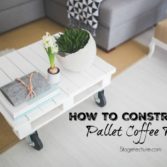Guest Blog Entry #29, Entry #315, October 29, 2010
As I have begun my official solopreneur venture I’m starting to realize how important a well designed home office is. Whether you are in it for one or ten hours the functions need to suit you. I’ve already started my list as to the “must haves” and “would-like-to-haves” list already!
Today Richard Taylor, A.I.A. of Richard Taylor Architects joins me in discussing how to design a great home office that works well with your lifestyle and your long term goals of what you want your office to become. Yep, that’s what I need!
Design Secrets of a First-Class Home Office
Several years ago I was working out of my home in an office I’d designed for myself. With plenty of space, oversized countertops, and specific places for each piece of office furniture and equipment I use (I’m highly computer-dependent), I was productive and efficient without sacrificing closeness to my family. In terms of design, space utilization, and ergonomics, I’d thought of everything.
Then two things changed my work setting in fundamental ways; a two-year old and a four-year old who delighted in knowing that Daddy was home all day.
But that wasn’t totally unexpected; I’d made provisions to increase the privacy of my office as the children grew.
There aren’t many hard and fast rules about home office design; our jobs and lives are unique and will influence each individual situation. But a few basic ideas apply almost universally, and will help to guide you towards making the best with your resources.
1.) Locating The Home Office
Even a well-planned office space won’t work if it’s located poorly. If you see clients in your office frequently, and especially if you have small children at home, separate the office from the home spaces as much as possible. This might mean an entrance designed for use by clients alone. If the office and home spaces are adjacent, proper sound insulation is a must.
Will you work at home forever? If not, what will become of that dedicated office? In my home, the old office is in “phase two” of its evolution, the kids’ “playroom”. In phase three it will be remodeled into a media room for the adults. Design your office to grow and change with you.
Remodeling an existing space into a home office requires you to look carefully at the use of adjacent spaces. Many clients will think it a faux pas if they hear the toilet flush upstairs during a meeting. Speaking of plumbing, will there be a nearby bathroom for client use? Will they have to wait for your son to get out of the shower to use it?
2.) Let Your Work Style Dictate The Design
If you work entirely at home, or if you bring home piles of paperwork from your main office, you’ll need greater accommodations. Countertop area and storage space are always in demand – make sure you’ve got enough. A large executive desk looks great but you will get much more use from a wide expanse of countertop.
Rather than creating expensive built-ins, many of my clients opt for what I call a “paper pantry”; a large walk-in closet, full of open shelves for paperwork, files, and office supplies. A paper pantry saves money, keeps the mess hidden, and can be used as a clothes closet should the office ever be needed as a future bedroom.
Receiving clients at home requires a place to conduct meetings. A conference table might fit the bill but don’t forget to consider how it will be used when clients aren’t present. A well-placed conference table should double as additional workspace for you.
3.) Accommodating Office Equipment
Almost every office requires a computer. It’s the personal computer that made the whole work-at-home concept possible. But computers are still bulky assemblages of wires and peripherals that take up valuable countertop space – suddenly you’ve got no room to work.
Whatever office machines you use, make sure you’ve got plenty of electrical and broadband outlets and telephone jacks so that you’ve got the flexibility to fine-tune the arrangement.
4.) Managed Growth
If you hope to move out into commercial space someday, don’t overdo the home office. Plan for a little growth, but don’t overbuild or overdesign a space that’s destined for obsolescence. Instead, look ahead to how that space will be used when you’ve moved out of it.
5.) Don’t “Underdesign” It
The temptation to think of a home office as strictly a place of function is strong. But if you really intend to use it, it’s vital to create a pleasant work atmosphere. Access to views and natural light helps increase the ambiance and allows you to be more productive. A few well-placed personal items give you “ownership” of the office; comfortable seating and good function reduce stress.
Keep in mind how much time you’re likely to spend there. You need to make the most of those hours so give yourself the same or better amenities than you’d expect from a well-designed outside office (you’ve already got the private parking space!). Surround yourself with an environment that supports your work and stimulates your creativity. Make it a place you look forward to going to. Properly done, a home office can be a comfortable, profitable, and liberating place to work.
Richard Taylor, A.I.A. owns Richard Taylor Architects in Dublin, Ohio where he helps homeowners get great design in their new home and remodeling projects. He also acts as his clients’ “eyes and ears” during the construction process, directing them around obstacles and pitfalls. Rich lives in Dublin, Ohio, and loves blogging about residential design, and plays a little golf now and then.
For more Office Design ideas on Stagetecture, click here.
Receive Stagetecture's Daily Lifestyle Ideas
FREE - Daily emails with recipes, home decor, D.I.Y, and lifestyle tips! : ) Who doesn't need help?










Some useful tips here.